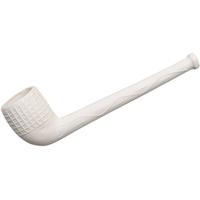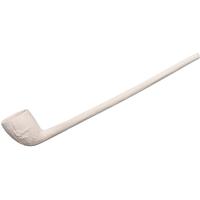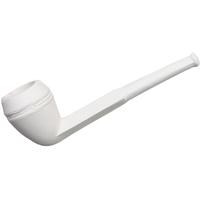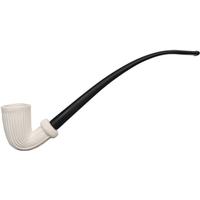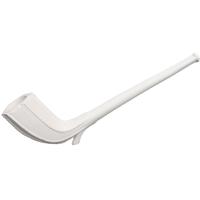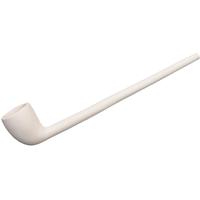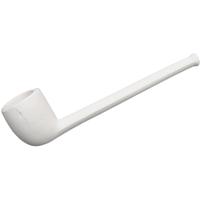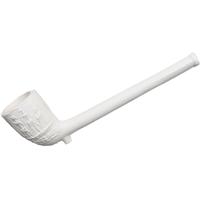Old German Clay
12 Total
+About Old German Clay
Filter +
Filters
Human beings have made use of the unusual natural properties of clay since time immemorial; weave a basket from vines or grass and apply a clay lining along the inside, and you have a form of water-bucket that has been used by countless stone-age societies. Shape, carve, and etch it into the likeness of a god, animal, or ancestor, and you have one of the earliest mediums of three-dimensional art. Process it into a softer, homogeneous consistency, roll it, bore out a chamber, insert a length of wire, allow it to dry a day or two, clamp it into a brass or iron mold, dry it some more, then fire it in a kiln, and the result is something which served as the quintessential smoking instrument of Western civilization from the 1600s up until the popularization of briar some two-hundred-odd years later.
Markus Fohr of Old German Pipes continues this clay pipe-making tradition, adhering to the same hand-pressing approach that's been in his family for generations. Based in Montabaur, Germany, Markus uses the prized, white clay of that region (also seen in the area's famed pottery), and some of the original molds he presses date back 240 years.
While clay pipes can be more brittle than those made from briar, they are completely flavor neutral and require no break-in, making them perfect for sampling new blends.
Note: While all of our other pipes are photographed individually, these are not, and you may expect some reasonable, minor degree of cosmetic variation between the example we've photographed and the pipe you receive.
Markus Fohr of Old German Pipes continues this clay pipe-making tradition, adhering to the same hand-pressing approach that's been in his family for generations. Based in Montabaur, Germany, Markus uses the prized, white clay of that region (also seen in the area's famed pottery), and some of the original molds he presses date back 240 years.
While clay pipes can be more brittle than those made from briar, they are completely flavor neutral and require no break-in, making them perfect for sampling new blends.
Note: While all of our other pipes are photographed individually, these are not, and you may expect some reasonable, minor degree of cosmetic variation between the example we've photographed and the pipe you receive.





